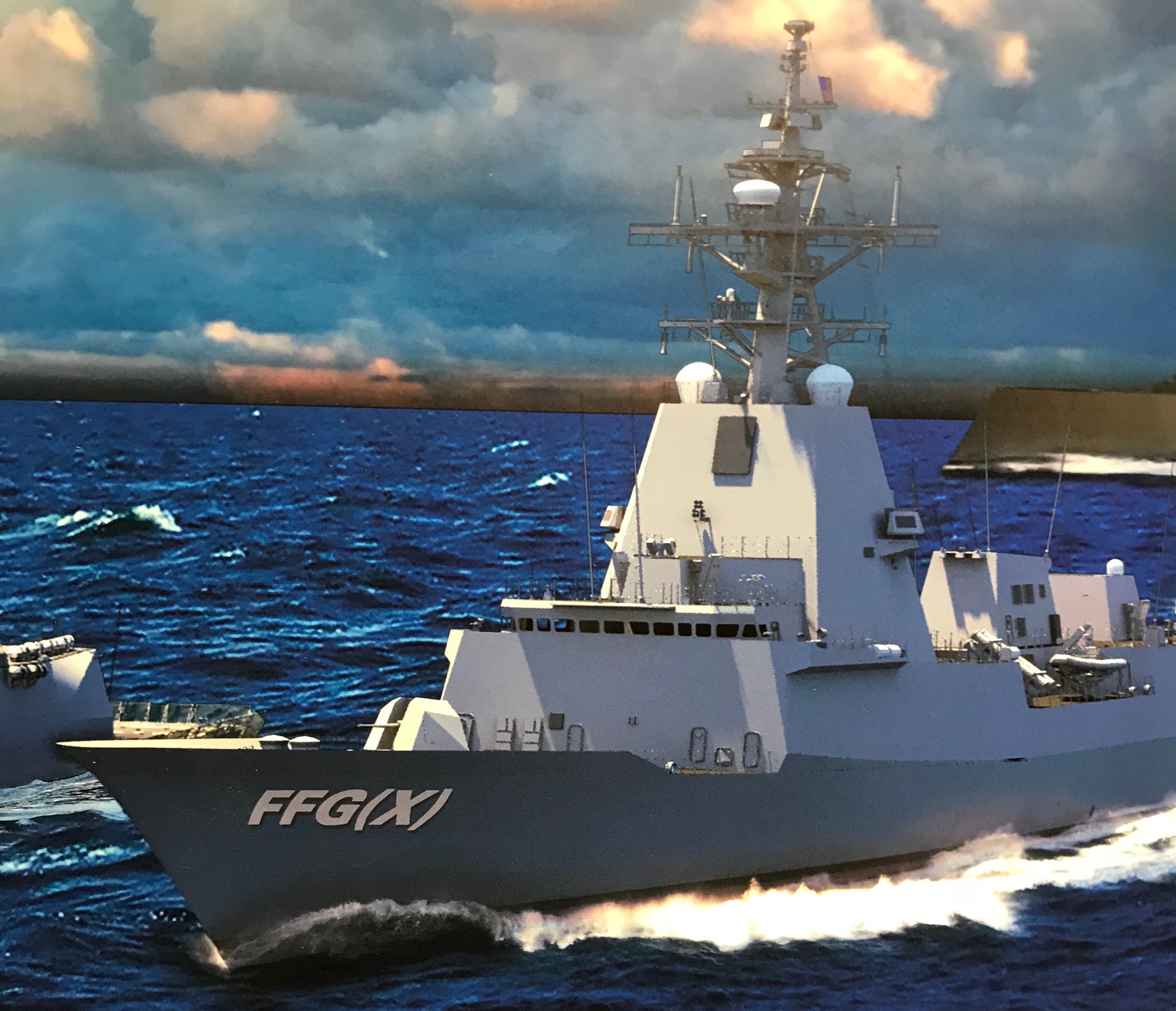
ARLINGTON, Va. – The Navy says it may have squeezed out about $150 million per hull in savings as the service closes in on final requirements for a planned class of next-generation frigates (FFG(X)), program officials said last week.
After raising eyebrows in Congress last year with an upper-end cost of about $950 million per hull for the second ship and beyond, the Navy is now saying that figure could be closer to $800 million.
“That $950 (million) was the threshold; $800 million is the objective,” frigate program manager with Program Executive Office Unmanned and Small Combatants Regan Campbell said on Thursday at the Surface Navy Association symposium.
“We started closer to the $950; we are trending to very close to the $800 now. We have taken some very significant costs out of the average follow units. Lead ship? I won’t give you a number, but it is reflected in the president’s budget, which you will see shortly.”
Last year, the Navy awarded five shipyards contracts for conceptual design work, allowing them time to tighten up their designs based on a “mature” parent designs of warships currently in production and to help the program office refine its requirements along the way.
Austal USA, Lockheed Martin, General Dynamics Bath Iron Works, Fincantieri Marine and Huntington Ingalls Industries were each awarded $15 million contracts for the work, with additional funds being awarded more recently.
The back-and-forth with industry throughout the rapid acquisition for the frigate produced the refinements to the requirements that have, in part, led to the cost savings.
“We’ve had initial design review with each of the contractors. We took those cost capability trades to leadership,” she said.
Based on the work, the Navy recently has approved the Capability Development Document (CDD) solidifying the requirements for FFG(X). The CDD is now awaiting Joint Requirements Oversight Council (JROC) approval, Campbell said.

With the work from the conceptual design contracts to be completed in June, the Navy is set to issue the final detailed design and construction request for proposals closer to the end of the year and make a final pick for the 20-ship program in 2020.
The Navy is also getting more specific on the weapons and sensors it wants to field aboard the new frigate.
For example, the Navy wants the ships to have a minimum of 32 Mark 41 Vertical Launch System cells aboard the ship for primarily anti-air warfare, to allow for self-defense or for the frigate to escort other ships. The Raytheon Enterprise Air Surveillance Radar (EASR) will serve as the main air search sensor for the frigate that will not only link the missiles in the VLS cells aboard but can also tie into the Navy’s emerging tactical data network via the high-bandwidth Cooperative Engagement Capability aboard the ship. The future frigates, with the CEC, could be used as sensor nodes for other allied ships and aircraft in providing targeting information for those other platforms.

That feature, included in the briefing but not highlighted in the presentation, could tie into the service’s current vision of unmanned surface vehicle plan. The future frigate could link to large USVs loaded with missiles as part of a future surface force.
The frigate will also build in additional power, space and cooling for a Surface Electronic Warfare Improvement Program (SEWIP) Block 3 Lite electronic warfare suite and a 150-kilowatt laser weapon.
While the five awardees and the Navy continue to work on the duration of the conceptual contract design, the service is expecting other shipyards with a mature parent design could submit a bid for the next RFP for detail design and construction.

“We’re on track. Our request for proposals will be going out this summer and will be awarded in ‘20,” Campbell said.
“We are doing a full and open competition for DD&C. We expect the five that have been part of this process to continue, but we may get other participants to come into the competition at that point.”





